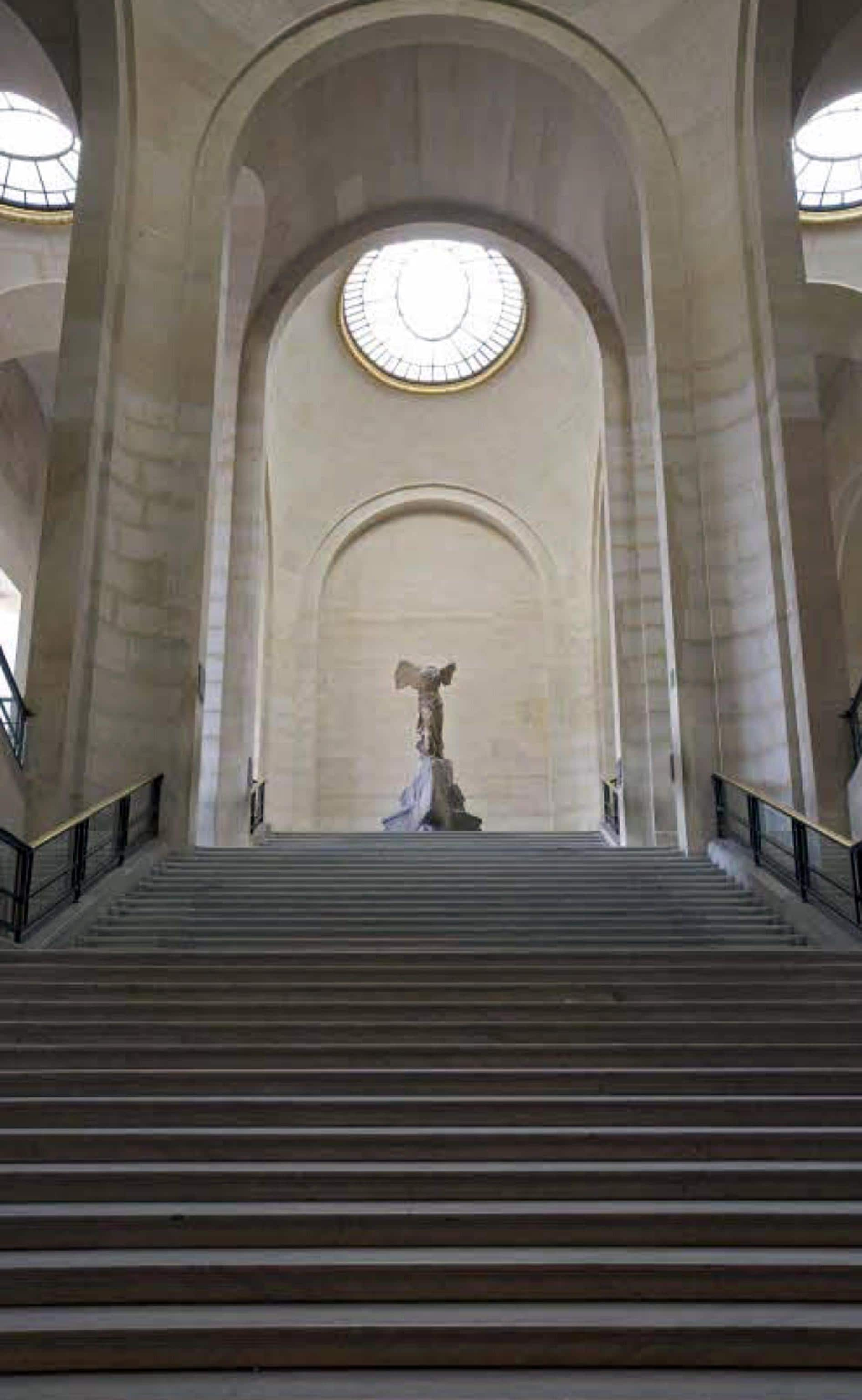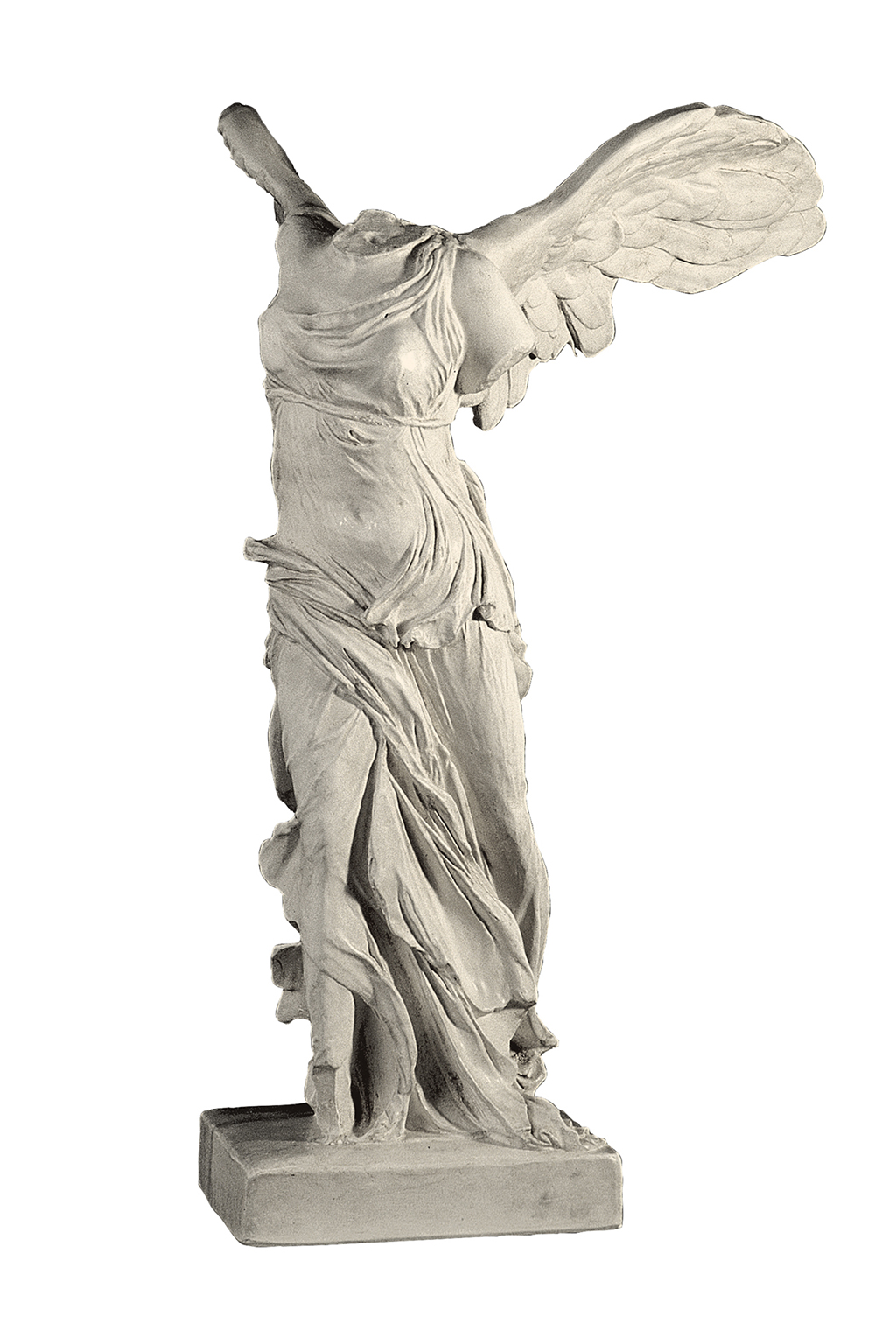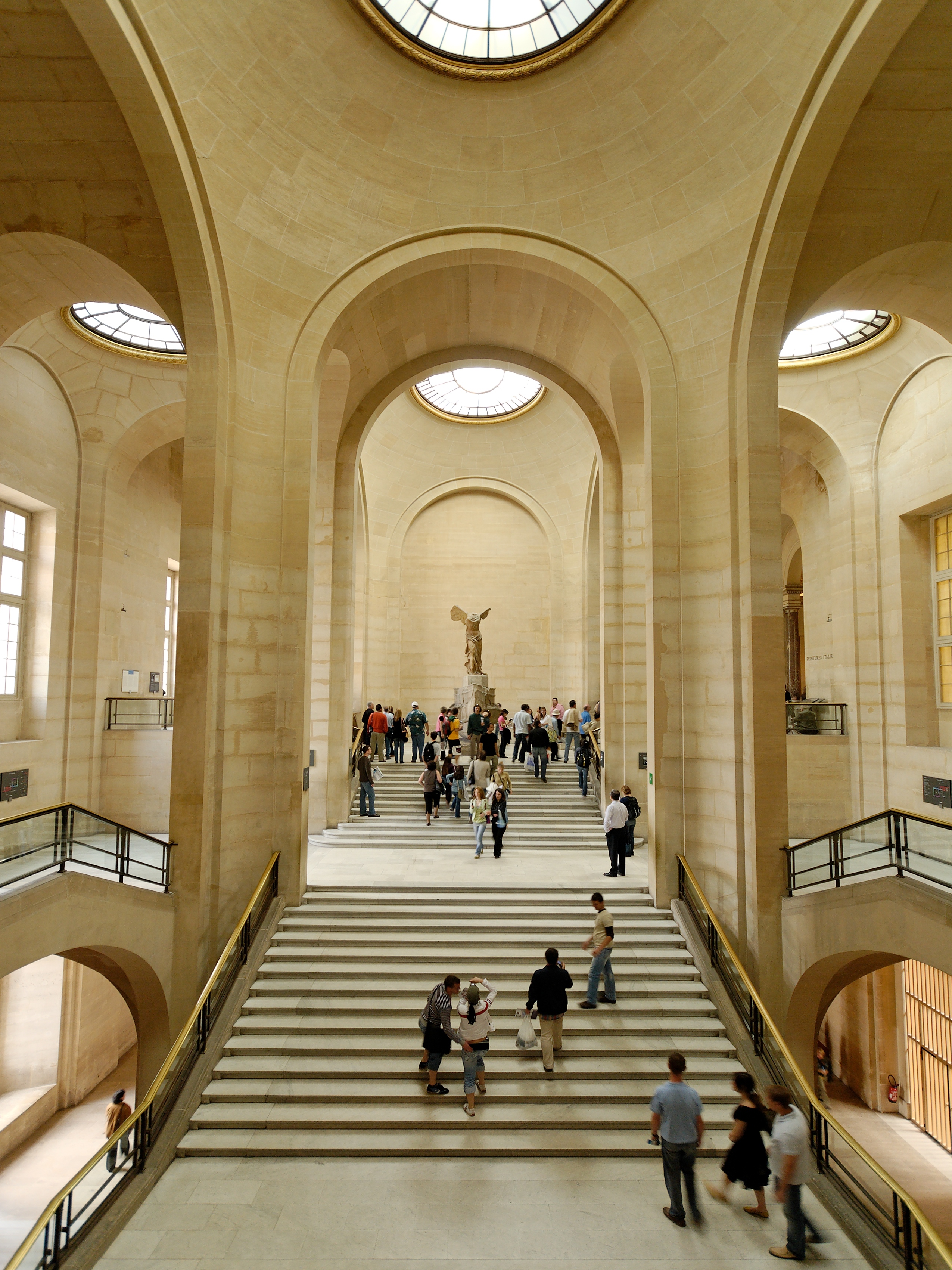
Nike di Samotracia; 200180 a.C.; marmo pario; 245 cm; Louvre, Parigi
Nike di Samotracia (Copia di) End of the 19th - beginning of the 20th century. Accademia di Belle Arti di Bologna Bologna, Italy.. Plaster cast from a marble original from 200 BC, from the island of Samothrace, preserved at the Louvre Museum. The cast is attributable between the late n.

Nike of Samothrace. Paris, Louvre Museum.
The removal of the Nike's marble socle blocks to the Louvre in 1879 left the ashlar foundations beneath vulnerable to spoliation, and all were gone by the time Lehmann's team made the first detailed state plan of the monument in the 1950s.. La Nike di Samotracia tra Macedoni e Romani. Un riesame del monumento nel quadro dell.

Nike di Samotracia, Louvre, Paris Sculture artistiche, Statue, Louvre
The Nike of Samothrace statue is named after the island on which it was found, situated to the north of the Aegean Sea.Now housed at the Louvre Museum, it is not known who made the Winged Victory of Samothrace, but it is believed to have been ordered to be built by Demetrius Poliocretes sometime between 295 and 290 BC.It is a Hellenistic-era Greek sculptural masterwork and depicts the goddess.

Nike di Samotracia LouvreParis sauromalv Flickr
The 18-foot sculpture depicts Nike, the Greek goddess of victory. As wet and wind-blown drapery clings to her body, the winged figure triumphantly steps toward the front of a ship, leading historians to conclude that it was created to commemorate a successful sea battle. The Winged Victory of Samothrace (Photo: muratart via Shutterstock)

La Nike di Samotracia restaurata Photogallery Rai News
Famed as being the greatest masterpiece in Hellenistic art, this marble sculpture made in the 2nd Century BC depicts the Greek goddess Nike. Also called Nike of Samothrace this sculpture is on permanent display at the Louvre standing majestically at 2.4 metres high. What makes this sculpture iconic is its highly detailed wings and intricately sculpted fabric; also the fact that it is missing.

La Nike di Samotracia Arte Svelata
Description. English: Daru Staircase with the winged Nike Victory of Samothrace, Denon wing, Louvre Museum. Français : L'escalier Daru et la Victoire de Samothrace, aile Denon, musée du Louvre. Date. 13 May 2007. Source/Photographer. Marie-Lan Nguyen ( Own work) Licensing[ edit] I, the copyright holder of this work, release this work into the.

Nike di Samotracia Louvre paris, Greek statue, Louvre
by Dr. Amanda Herring Nike (Winged Victory) of Samothrace, Lartos marble (ship) and Parian marble (figure), c. 190 B.C.E. 3.28 m high, Hellenistic Period (Musée du Louvre, Paris); a conversation between Dr. Beth Harris and Dr. Steven Zucker

Ingenieur wiederholen Verwirrt nike di samotracia al louvre Präposition
The recent conservation and reinstallation of the Nike of Samothrace, the restudy of its archaeological context and petrology, the collapse of the consensus that it celebrated the Rhodian naval victories at Side and Myonessos in 190 B.C.E., and the growing accord among naval historians that its ship is not a trihēmiolia together prompt a reexami.

FileNike of SamothraceLouvreParis371.jpg Wikimedia Commons
Samothrace (Samothrake) is a Greek island in the northern Aegean which was prominent from the Classical period as a member of the Delian League. Its greatest claim to fame was as a cult centre favoured by Macedon and visited by pilgrims from across the Aegean. Its name today is best known for the magnificent Hellenistic Nike sculpture, the Nike.

Louvre Musee Nike Samotracia Editorial Photography Image of france
La Nike di Samotracia, o Vittoria di Samotracia, è una scultura in marmo pario (h. 245 cm) di scuola rodia, dalla discussa attribuzione a Pitocrito, databile al 200-180 a.C. circa e oggi conservata al Museo del Louvre di Parigi . Indice 1 Storia 2 Descrizione 3 Influenza culturale 4 Note 5 Bibliografia 6 Voci correlate 7 Altri progetti

Nike of Samothrace. Paris, Louvre Museum.
MLA Style. Brown, Tory. " Nike of Samothrace ." World History Encyclopedia. World History Encyclopedia, 06 Jul 2016. Web. 01 Jan 2024. The Nike of Samothrace, c. 190 BCE. The statue was dedicated to the Great Gods at the sanctuary on Samothrace. (Louvre Museum, Paris)

malinconie“Nike di Samotracia, Musée du Louvre, Paris” Palace
Nike (Winged Victory) of Samothrace. Standing at the top of a staircase in the Musée du Louvre in Paris, the Nike of Samothrace looks down over her admiring crowds. One of the most revered artworks of Greek art, the Nike has been on display in the Louvre since 1866. The statue was brought to France by Charles Champoiseau, who found it in.

impulso d'arte NIKE DI SAMOTRACIA
In Nike. 420 bce) and the Winged Victory of Samothrace. The latter, discovered on Samothrace in 1863 and now in the Louvre Museum, Paris, was probably erected by Rhodians about 190 bce to commemorate a sea battle. Excavations have shown that the sculpture was placed alighting on a flagship, which was…. Read More. Other articles where Nike of.

Louvre 4 NIke di Samotracia Plaster sculpture, Statue tattoo, Lion
The Winged Victory of Samothrace, or the Nike of Samothrace, [2] is a votive monument originally found on the island of Samothrace, north of the Aegean Sea. It is a masterpiece of Greek sculpture from the Hellenistic era, dating from the beginning of the 2nd century BC (190 BC).

FileNike of Samothrace, Louvre Museum, Paris October 2015.jpg
Original file (3,616 × 4,800 pixels, file size: 4.8 MB, MIME type: image/jpeg) File information. Structured data. Captions. Captions. English. Add a one-line explanation of what this file represents. French. Victoire de Samothrace.

Comparison of Nike of Samothrace & the Dying Warrior WriteWork
Italiano: Nike di Samotracia. Visitors of Louvre (Nike of Samothrace) (30 F) Media in category "Nike of Samothrace" The following 10 files are in this category, out of 10 total. Assembly attempt 1879.jpg 290 × 377; 52 KB.